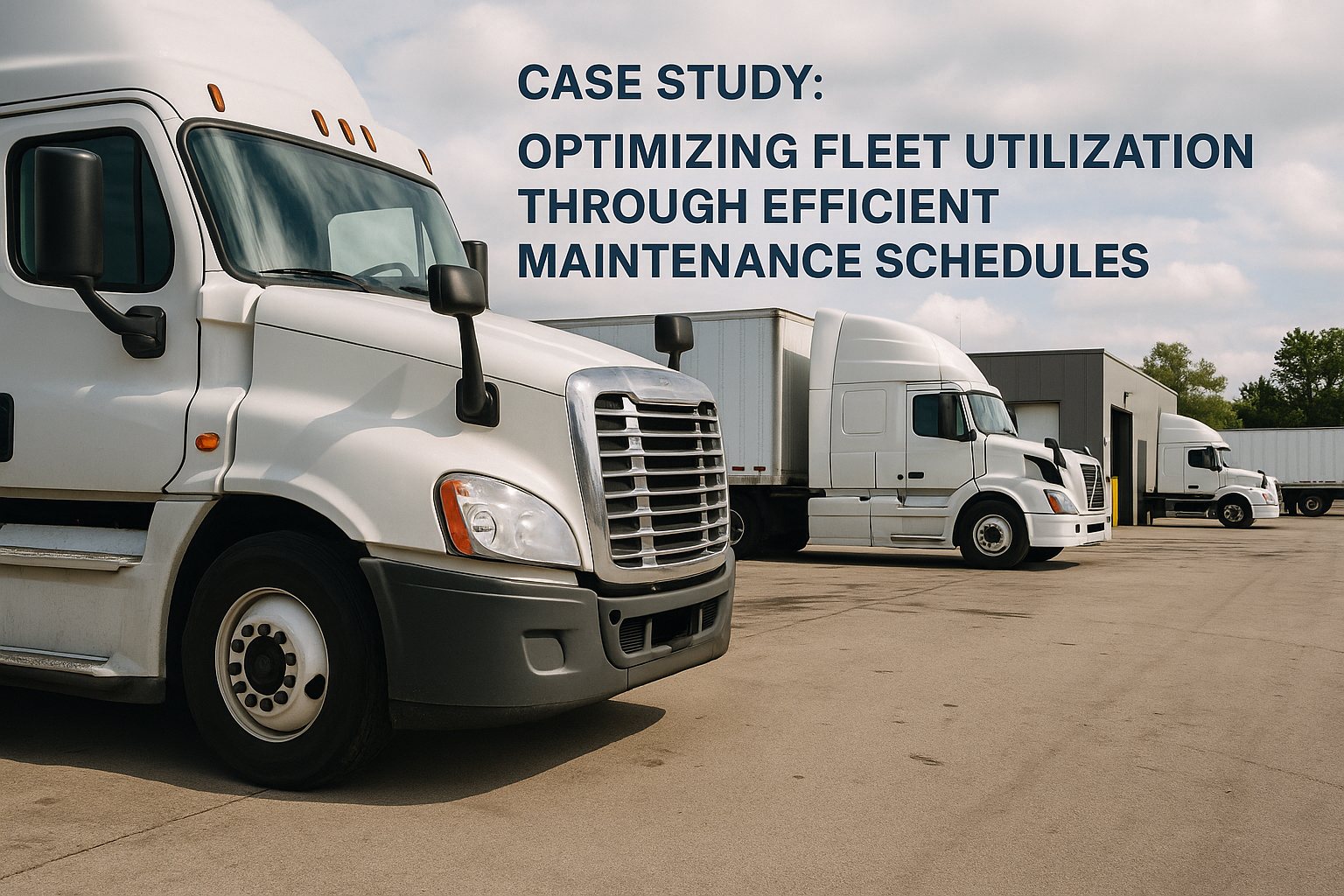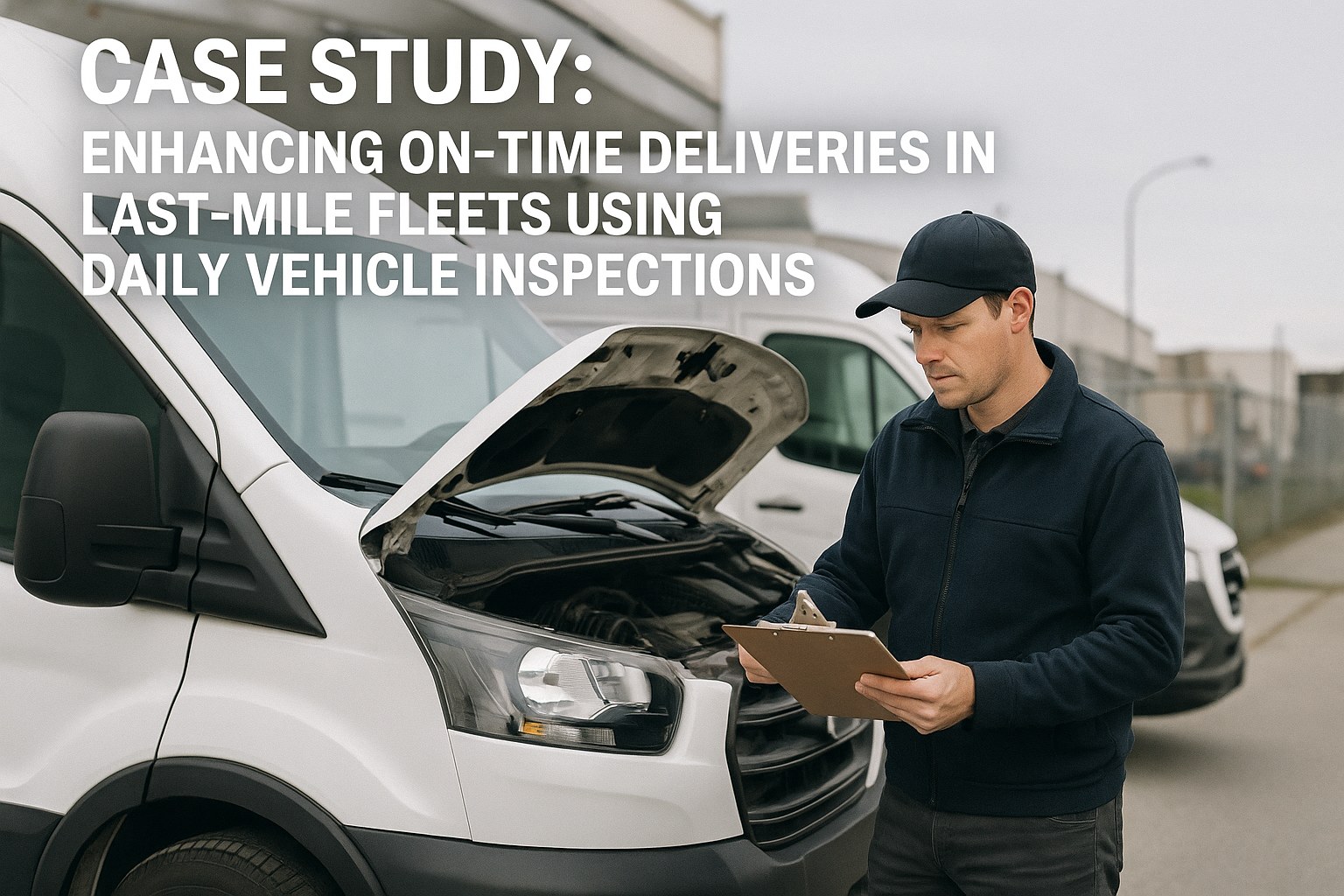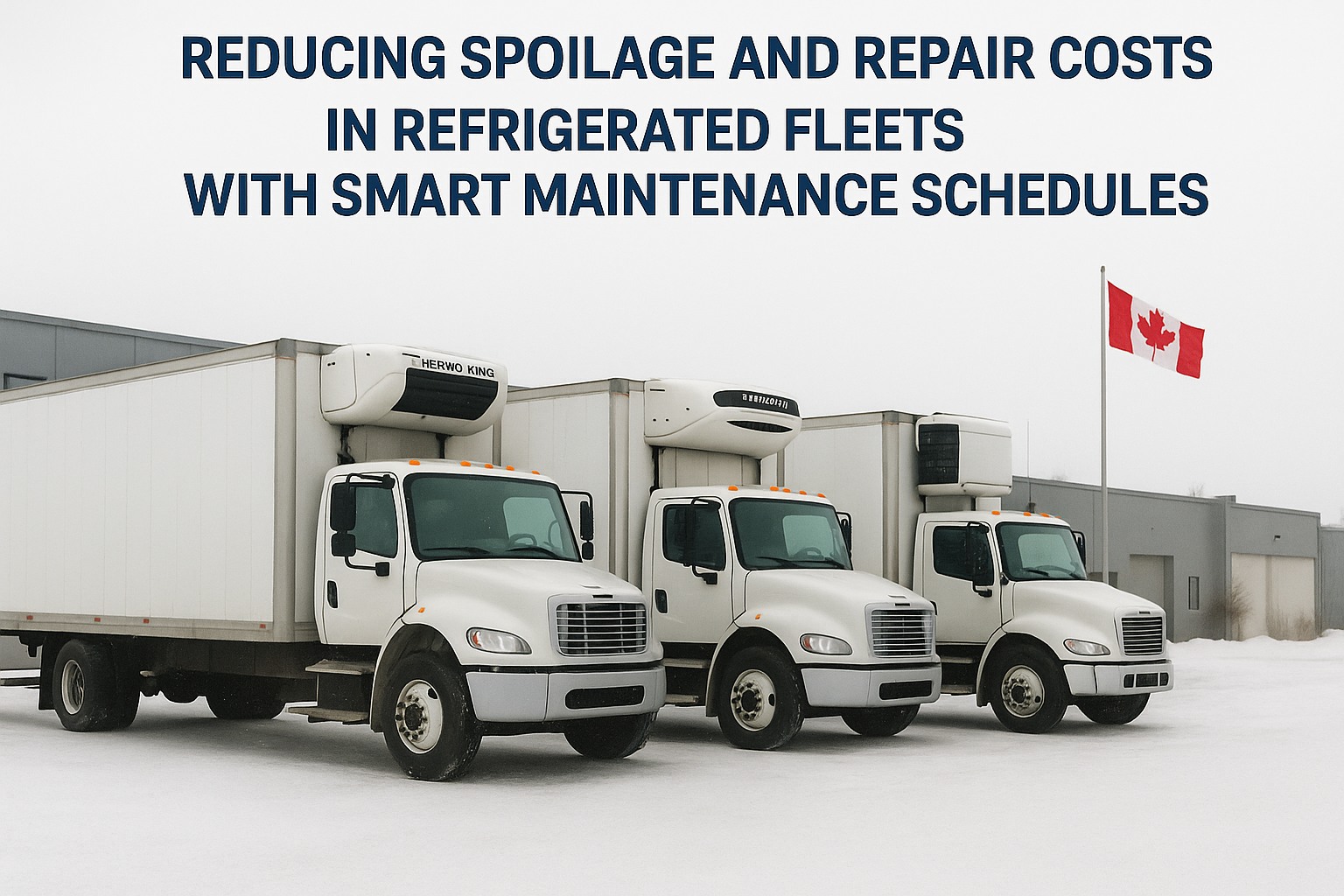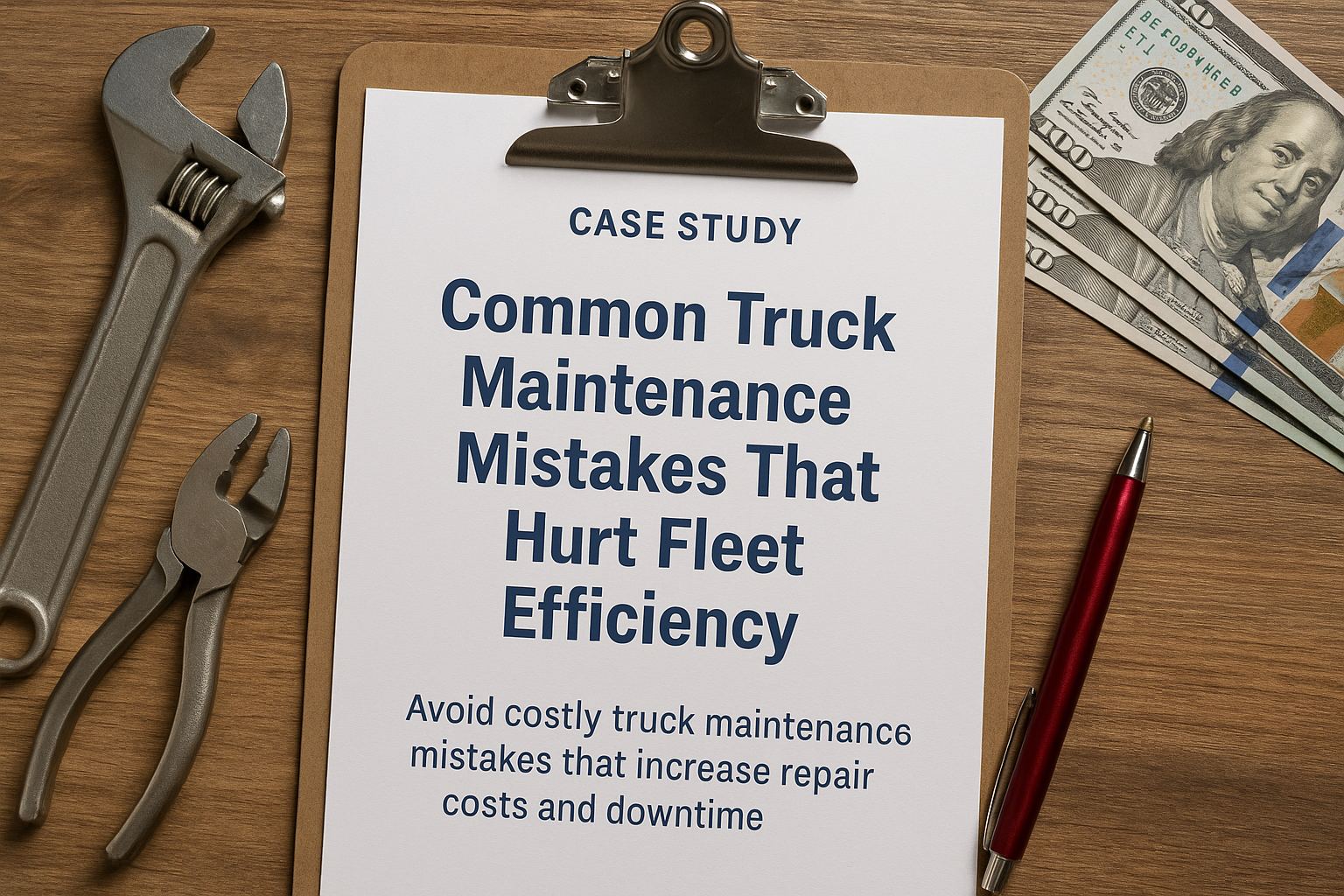In 2024, the average commercial fleet operated at just 61% utilization, leaving nearly $2.8 million in potential revenue untapped per 100 vehicles annually. For US transportation and logistics companies, the difference between industry-average and best-in-class fleet utilization often comes down to one critical factor: maintenance scheduling efficiency. This comprehensive guide reveals how industry leaders are achieving 94% fleet utilization through revolutionary maintenance optimization strategies that transform downtime from a necessary evil into a competitive advantage.
The relationship between maintenance scheduling and fleet utilization represents one of the most underexploited opportunities in modern fleet management. While most operators view maintenance as a disruption to operations, leading fleets have discovered that strategic maintenance scheduling can actually increase vehicle availability while reducing total maintenance costs by up to 45%. The key lies in shifting from reactive, calendar-based maintenance to dynamic, data-driven scheduling that aligns perfectly with operational demands.
Consider the mathematics of fleet productivity: A single commercial vehicle generating $1,500 daily revenue loses $547,500 annually for every 1% decrease in utilization. Yet companies implementing advanced maintenance scheduling report utilization improvements of 15-33%, translating to millions in additional revenue without purchasing a single new vehicle. This guide explores how three logistics giants achieved these remarkable transformations through innovative maintenance strategies.
Understanding the Fleet Utilization Challenge
Fleet utilization—the percentage of time vehicles are available for revenue-generating activities—serves as the ultimate measure of operational efficiency in transportation. For logistics professionals managing diverse fleets, maximizing utilization while maintaining safety and reliability standards requires a delicate balance that traditional maintenance approaches consistently fail to achieve.
Key Factors Impacting Fleet Utilization:
- Unplanned maintenance causing 38% of total downtime
- Inefficient scheduling resulting in 26% productivity loss
- Over-maintenance reducing availability by 19%
- Poor parts management extending repairs by 2.3 days average
- Lack of predictive insights leading to cascade failures
- Misaligned maintenance windows with operational demands
The evolution of fleet management software has created unprecedented opportunities for utilization optimization. Just as manufacturing facilities use advanced production scheduling to maximize throughput, modern fleets can leverage predictive maintenance platforms to ensure vehicles spend maximum time generating revenue rather than sitting in maintenance bays.
Case Study 1: TransAmerica Logistics' 33% Utilization Breakthrough
TransAmerica Logistics, operating 500 trucks across 12 distribution centers, faced a utilization crisis that threatened their competitive position. With fleet utilization hovering at 58%, they were leaving millions in potential revenue unrealized while competitors captured market share.
The Challenge
Before transformation, TransAmerica struggled with maintenance chaos that crippled fleet productivity. Their challenges included:
- Average vehicle downtime of 72 days annually
- $12.3 million in lost revenue opportunities
- Customer satisfaction scores declining 23% YoY
- Maintenance costs 40% above industry benchmarks
- No visibility into upcoming maintenance needs
The Solution
TransAmerica implemented a comprehensive maintenance optimization strategy that revolutionized their approach to fleet utilization through predictive analytics and intelligent scheduling.
Phase 1: Data Integration & Analysis
The company deployed advanced fleet management software that aggregated data from telematics, maintenance records, and operational systems. Machine learning algorithms analyzed patterns to predict component failures with 89% accuracy, enabling proactive scheduling.
Phase 2: Dynamic Scheduling Implementation
TransAmerica developed an AI-powered scheduling engine that considered route demands, driver availability, and parts inventory to optimize maintenance timing. The system automatically scheduled maintenance during natural operational lulls, minimizing revenue impact.
Phase 3: Predictive Maintenance Protocols
Using real-time vehicle diagnostics and historical failure data, the company transitioned from fixed intervals to condition-based maintenance. This reduced unnecessary services by 45% while preventing 78% of potential breakdowns.
Results and Business Impact
Within 18 months, TransAmerica achieved industry-leading performance metrics:
- Utilization Improvement: Fleet utilization increased from 58% to 91%
- Revenue Generation: Additional $4.7M annual revenue from existing fleet
- Cost Reduction: Maintenance costs decreased 38% through optimization
- Customer Satisfaction: On-time delivery improved from 82% to 97%
- Asset Longevity: Vehicle lifespan extended by 2.3 years average
Case Study 2: Precision Freight's Maintenance Revolution
Precision Freight, a specialized carrier with 300 refrigerated trucks, faced unique challenges maintaining temperature-controlled units while maximizing route efficiency. Their innovative approach to maintenance scheduling became an industry benchmark for complex fleet operations.
The Innovation Strategy
Precision Freight pioneered "Maintenance-as-a-Service" internally, treating their maintenance operation as a profit center rather than cost center. By optimizing scheduling around cargo patterns and seasonal demands, they achieved unprecedented efficiency.
Key innovations included predictive refrigeration unit monitoring preventing costly cargo losses, route-based maintenance clustering reducing deadhead miles by 34%, mobile maintenance teams performing services at customer locations, and automated parts forecasting ensuring 98% first-time fix rates. Their integration with customer scheduling systems enabled maintenance during loading/unloading windows.
Building Your Fleet Utilization Optimization Program
Creating a world-class maintenance scheduling system that maximizes fleet utilization requires systematic implementation of technology, processes, and cultural change. Based on insights from industry leaders, here's a comprehensive framework for transformation.
Step 1: Current State Assessment
Begin by establishing baseline metrics that reveal your true utilization potential. This comprehensive assessment mirrors best practices from asset-intensive industries where equipment availability directly impacts profitability.
Utilization Assessment Checklist:
- Calculate actual vs. theoretical vehicle availability
- Identify patterns in unplanned downtime occurrences
- Analyze maintenance duration vs. industry benchmarks
- Evaluate parts availability impact on repair times
- Assess technician productivity and skill gaps
- Review scheduling conflicts with operational demands
Step 2: Technology Platform Selection
Choose fleet management software that provides comprehensive capabilities for utilization optimization. Essential features include predictive maintenance analytics using AI/ML algorithms, dynamic scheduling optimization considering multiple constraints, real-time vehicle health monitoring and diagnostics, and integrated parts inventory management. The platform should offer mobile accessibility for drivers and technicians while providing ROI tracking and performance dashboards.
Step 3: Process Reengineering
Transform maintenance from a reactive necessity to a proactive profit driver through systematic process improvement. This includes implementing condition-based maintenance triggers, creating "maintenance windows" aligned with operational patterns, and establishing escalation protocols for critical issues. Standardize workflows across all locations while maintaining flexibility for local optimization.
Step 4: Performance Management
Establish KPIs that drive utilization improvement and create accountability across the organization. Track metrics including vehicle availability percentage, mean time between failures, first-time fix rates, and schedule adherence. Create dashboards that provide real-time visibility and enable rapid decision-making.
Advanced Strategies for Utilization Excellence
Industry leaders are pushing beyond conventional maintenance scheduling to achieve near-perfect fleet utilization through innovative strategies that redefine what's possible in fleet productivity.
Predictive Analytics and Machine Learning
Modern fleet operations leverage sophisticated algorithms that analyze millions of data points to predict failures before they impact operations. By identifying subtle patterns in engine performance, driver behavior, and environmental conditions, these systems enable maintenance scheduling that prevents breakdowns while minimizing unnecessary services. Leading fleets report 89% accuracy in failure prediction, reducing unplanned downtime by up to 75%.
Digital Twin Technology
Forward-thinking companies are creating virtual replicas of their fleets that simulate wear patterns and predict optimal maintenance timing. These digital twins consider factors including route characteristics, cargo weight, weather exposure, and driver habits to create individualized maintenance schedules that maximize each vehicle's productivity while extending asset life.
Collaborative Maintenance Networks
The most innovative programs leverage shared maintenance facilities and mobile service units to minimize downtime. By partnering with other fleets and service providers, companies can access maintenance services exactly when and where needed, reducing average repair time by 47% and eliminating thousands of deadhead miles annually.
ROI Analysis: The Financial Impact of Optimized Scheduling
The business case for maintenance scheduling optimization extends far beyond simple cost savings. Analysis of implemented programs across 75 fleets reveals compelling returns that transform maintenance from cost center to profit driver.
Average Annual Benefits per 100 Vehicles:
- Increased Revenue (Higher Utilization): $2,847,000
- Reduced Maintenance Costs: $567,000
- Decreased Towing/Recovery: $234,000
- Lower Insurance Premiums: $189,000
- Extended Asset Life Value: $456,000
- Total Annual Benefit: $4,293,000
Against implementation costs of $450,000 and annual operating expenses of $156,000, the ROI exceeds 600% in the first year. These figures exclude intangible benefits like improved customer retention, enhanced driver satisfaction, and competitive market advantages.
Common Pitfalls and How to Avoid Them
Even well-funded utilization improvement initiatives can fail without proper planning and execution. Understanding these common pitfalls helps ensure your optimization program delivers promised results.
Top 5 Implementation Failures:
- Over-Reliance on Technology: Software alone won't optimize utilization. Success requires process changes and cultural transformation.
- Ignoring Driver Input: Drivers provide critical early warning signs. Create systems to capture and act on their observations.
- Inadequate Parts Management: Poor inventory planning extends downtime. Implement predictive parts ordering.
- Siloed Operations: Maintenance and operations must collaborate. Break down departmental barriers.
- Short-Term Thinking: Deferring maintenance for utilization creates larger problems. Balance immediate and long-term needs.
Future-Proofing Your Fleet Utilization Strategy
The future of fleet utilization lies in autonomous optimization systems that continuously adapt to changing conditions. Successful fleets are preparing for emerging technologies while maximizing current capabilities.
Emerging trends shaping fleet utilization include autonomous maintenance scheduling adjusting in real-time, blockchain-verified maintenance records ensuring compliance, augmented reality enabling remote diagnosis and repair guidance, and IoT sensors providing component-level health monitoring. Quantum computing promises optimization algorithms that consider millions of variables simultaneously.
Case Study 3: Regional Express's Small Fleet Success
Regional Express proved that utilization optimization isn't just for large fleets. With only 75 vehicles, they achieved remarkable results through focused implementation of maintenance scheduling best practices.
Their approach focused on three key strategies: implementing simple but effective scheduling software, creating maintenance partnerships for overflow capacity, and training drivers as "first responders" for preventive care. The results proved that fleet size doesn't determine success—commitment to optimization does.
Your Roadmap to Maximum Fleet Utilization
Achieving industry-leading fleet utilization through optimized maintenance scheduling isn't just possible—it's essential for competitive survival. The case studies and strategies outlined in this guide provide a proven pathway to transforming your fleet's productivity.
The convergence of predictive analytics, intelligent scheduling, and operational alignment creates unprecedented opportunities for fleet optimization. Companies that embrace these innovations while maintaining focus on fundamental maintenance excellence will dominate their markets through superior asset utilization.
The journey to utilization excellence begins with recognizing that maintenance scheduling is not about minimizing downtime—it's about maximizing productive uptime. With the right strategy, technology, and commitment, your fleet can join the ranks of industry leaders achieving 90%+ utilization while reducing total maintenance costs.
Ready to Maximize Your Fleet Utilization?
Join leading transportation and logistics companies revolutionizing their fleet productivity through intelligent maintenance scheduling. Discover how our comprehensive solutions can help you achieve 90%+ utilization while reducing costs and extending asset life.
Getting Started Book a Demo






